2014 BMW F800GS Adventure Vs. Triumph Tiger 800XC
Middleweight adventurers hit sweet spot in Colorado
When dreaming of exploring the globe on two wheels, adventure riders usually dream big, aspiring to high-end machines like BMW’s iconic R1200GS and KTM’s wonderfully fast and capable 1190 Adventure. However, those lust-worthy globetrotters are priced in a strata that is a stretch for the reality of most riders. Both have entry fees starting around $16,000, but adding optional accessories can bring the MSRPs dangerously close to $20k.
Best On-Off Road / Adventure Motorcycle Of 2014
Single-cylinder adventure bikes are more affordable and often have greater off-road abilities, but they’re less happy droning along boring interstate routes that are often the best or only way to the epic trails.
Enter Goldilocks. BMW’s F800GS and Triumph’s Tiger 800 are relatively affordable adventure conveyances, with highway manners vastly preferable to one-lunged ADVs, but lighter and more manageable – on the trail and the wallet – than the choices in the 1200cc range. The F800GS made its debut in 2008, and Triumph followed BMW’s lead in 2011 with the Tiger 800.
2011 Adventure-Touring Shootout: Triumph Tiger 800XC Vs. BMW F800GS + Video
It’s been three years since we last compared these Euro ADVs. They are, in most ways, very well matched – even in terms of the way they look. Triumph clearly had the BMW as its target when designing the Tiger 800.
This class remained static for a couple of years, but in 2014 BMW debuted an Adventure version of its venerable F800GS. Perhaps its biggest upgrade is its underseat fuel tank, enlarged from a barely adequate 4.2 gallons to a Baja-ready 6.3 gallons – yielding as much as an extra 100 miles between fuel stops. Touring amenities are also improved by a larger windscreen, standard hand guards and a more comfortable seat
A BMW with Adventure in its name still must include equipment to handle off-road terrain more effectively. As such, the 800GSA includes tubular engine guards, a nylon sump protector, beefier subframe and aluminum saddlebag mounts as standard equipment. Visually, the GSA can be spotted by its longer beak of a front fender, larger engine shrouds and a wider tail from the bigger fuel tank. Short riders may want to order the optional-at-no-cost low seat that brings saddle height down from 35.0 inches to 33.9 inches
2014 BMW F800GS Adventure Review
The F800GS Adventure has a base price of $13,550, a $2,100 upcharge over the base GS, which includes a luggage rack and 12-volt outlet. However, our GSA was fully loaded with options, including the “Premium Package,” an $800 upgrade that includes niceties like heated grips, traction control, a centerstand and BMW’s nicely tuned “Off-Road” riding mode, which allows useful slips and slides on dirt terrain. Add another $645 for the LED fog lights and electronic suspension adjustment (ESA), and we’re at $14,995.
Meanwhile, the Tiger 800 carries on basically unchanged. As previous, opting for the XC model yields a more dirt-worthy adventurer for an extra $1,000. Spoked wheels replace cast-aluminum ones, and the front hoop grows in diameter from 19 to 21 inches. Longer suspension travel, nearly two inches up at both ends, helps suck up bigger hits and raises the seat to 33.2 inches. The saddle includes a seat adjustment that lifts the seat nearly an inch from its low position. The 2014 800XC has a base price of $11,999.
Rematch
Following the F800GS Adventure’s launch in Utah, we were able to spend a couple of days riding it alongside a Tiger 800XC in Colorado, a 2012 model owned by friend of MO, Dean Hight. You might recognize Dean as a guest rider in our 2013 Adventure-Touring Shootout.
Dean accessorized his Tiger with Triumph crash bars ($200) and heated grips ($249). Rather than buying Triumph’s saddlebags ($800), Dean uses a set of Wolfman soft bags. The stock Bridgestone Battle Wings were replaced by Heidenau K60 tires, and Dean reports being impressed by their grip, both on and off the pavement, and with their durability. They also better match the off-road intent of the BMW’s GSA and its Continental TKC80 knobby tires fitted as a no-cost option instead of the standard Michelin Anakees.
Colorado, of course, is a prime location to test adventure bikes such as these, and we spent nearly as much time off-road as we did on pavement. Our BMW was accessorized with the optional aluminum bash plate that guards the oil filter and exhaust header pipes, a virtual necessity if riding an 800GS in rugged and rocky terrain. The Contis on our GSA are adequate on paved surfaces, but they excel during off-road use.
On The Road
The most obvious distinction between this pair is found in the engine bay. BMW relies on a ruthlessly efficient parallel-Twin powerplant. The 798cc motor boasts a broad spread of power that makes for an effective tool, but its character isn’t as smooth or as sweet as the wonderful 799cc inline-Triple in the Tiger. Boiled down to their base characteristics, the BMW’s mill is more tractable and better suited to off-road duties, while the Trumpet’s peakier ‘plant shines while out on any paved roads.
The Tiger hews closer to a sport-touring ride than the F800, with lower-set handlebars and a shorter windscreen. Its three-cylinder motor is revvier than the BMW’s Twin, which makes it more fun to spin up when space allows. It’s also immensely smoother than the vibey German unit. The F800’s pronounced vibration was Dean’s biggest complaint about the Beemer. As for me, the vibes are apparent but not particularly bothersome, even after the long ride from Utah to Colorado.
The BMW edges the Tiger in its over-the-road comfort. The Adventure’s adjustable windshield is remarkably effective at diverting air from a rider, and its ride is so plush that it’s difficult to imagine a cushier ride. The BMW’s trip computer is a nice feature on a bike meant for traveling, but the LCD info screen is fairly small and not easy to read. On a related note, we’d gladly give up the analog speedometer’s 160-mph range for larger and more clearly defined numerals.
The Triumph is also a comfy traveler, and its height-adjustable seat gives the option of extending legroom if desired. Its digital speedo is easier to see than the little numbers on the Beemer’s analog unit. The Tiger’s front end earned some criticism for a fork that compressed too readily, even though the bite from the brakes was relatively soft compared to the F800’s firm and accurate lever feel. An engine whine above 55 mph is mildly irritating. Additionally, a Tiger owner must do without traction control.
Off The Road
When it comes to navigating the variable complexities of off-roading, the GS Adventure is the preferable mount. Its motor tractors away from as little as 2000 rpm, spitting out exactly what a rider’s wrist demands. The Tiger, despite a narrow clutch engagement zone and a peakier powerband, performed surprisingly well in the dirt – second gear is usable from just 15 mph. It delivered more traction than expected on hard-packed dirt, but, in loose terrain, the motor spins up too quickly and causes the tire to lose grip. And, on washboard surfaces, the Tiger suffers annoying axle tramp.
“The BMW felt more planted in the dirt that we rode,” Dean commented. “It had plusher suspension in the dirt, and it was easier to moderate the throttle at slow speeds. The Twin lugged better than the Triple.”
A lower center of gravity is another off-road advantage for the F800, despite a 30-lb weight disadvantage. With the fuel tank placed under the seat and the engine’s inclined cylinders, the BMW feels much less top-heavy than the Tiger. In certain gnarly circumstances, this could be the difference between riding through them or eating dirt.
If things do get out of hand, the BMW’s sturdy engine/bash guards will probably do a better job of limiting damage. Dean doesn’t rate the Triumph’s guards highly.
“They made the bike look more Adventur-y, I suppose, but one tip-over off pavement left them pretty scarred, as well as the plastic bits at the tank,” he lamented. “The plastic tank and rad covers weren’t expensive, but I had expected the crash bars to be more protective.”
Conclusion
If price was no object, and off-roading was to be a key mission, BMW’s F800GS Adventure is the superior machine. It boasts robust wind protection, higher technology, a better luggage system, and versatile competence no matter where its front tire is aimed.
However, price is almost always a factor in anyone’s purchasing decision, so the Tiger’s cheaper ($1,500-plus) entry fee looks rather appealing, especially to riders who intend to keep their adventures on paved roads. .
“The Tiger better suits the type of riding I would do with either of them,” said our Coloradan tester. “The Triumph costs less and, in my opinion, is more fun to ride.”
BMW F800GS Adventure
+ Highs
- Ready for almost anything
- Off-roading champ
- Nice touring rig, too!
– Sighs
- Pricey when accessorized
- Coarse engine
- Instrumentation could be easier to read
Triumph Tiger 800XC
+ Highs
- Sexy three-cylinder sound and feel
- Strong value
- Sportier on-road handling
– Sighs
- Less adept at off-roading
- Less wind protection
- Less factory customization options
Middleweight Adventure Shootout Scorecard
| Category | BMW F800GS Adventure | Triumph Tiger 800XC |
|---|---|---|
| Engine | 84.38% | 85.00% |
| Transmission/Clutch | 97.50% | 85.00% |
| Handling | 82.50% | 85.00% |
| Brakes | 90.00% | 77.50% |
| Suspension | 88.75% | 82.50% |
| Technologies | 95.00% | 60.00% |
| Instruments | 80.00% | 87.50% |
| Ergonomics/Comfort | 95.00% | 78.75% |
| Quality, Fit & Finish | 90.00% | 82.50% |
| Cool Factor | 82.50% | 85.00% |
| Grin Factor | 65.00% | 80.00% |
| Overall Score | 86.25% | 81.15% |
Middleweight Adventure Shootout Specs | |||
| BMW F800GS Adventure | Triumph Tiger 800 XC | ||
| MSRP | $13,550 ($14,995 as tested w/o luggage) | $11,999 ($12,448 as tested w/o luggage) | |
| Engine Capacity | 798cc | 799cc | |
| Engine Type | Liquid-cooled 4-stroke in-line two-cylinder engine, four valves per cylinder, two overhead camshafts, dry sump lubrication | Liquid-cooled, 12 valve, DOHC, in-line three-cylinder | |
| Horsepower | 81.3 @ 8400 rpm | 84.0 @ 9900 rpm | |
| Torque | 57.2 lb.-ft @ 6100 rpm | 51.2 lb.-ft @ 7800 rpm | |
| Bore x Stroke | 82 mm x 75.6 mm | 74mm x 61.9mm | |
| Compression | 12.0:1 | 12.0:1 | |
| Fuel System | Electroinc intake pipe injection, digital engine management (BMS-K+) | Multipoint sequential electronic fuel injection | |
| Transmission | Six-speed | Six-speed | |
| Final Drive | Chain | Chain | |
| Front Suspension | 43mm Upside down telescopic fork. 9.1 in. travel | 45mm Showa telescopic fork. 8.6 in. travel | |
| Rear Suspension | Single shock, rebound and preload adjustable. 8.5 in. travel | Single Showa shock, rebound and preload adjustable. 8.5 in. travel | |
| Front Brakes | Dual 300mm discs. Two-piston calipers with switchable ABS | Dual 308mm discs. Nissin two-piston calipers. Switchable ABS | |
| Rear Brakes | Single 265mm disc. Single-piston caliper with ABS | Single 255mm disc. Nissin single-piston caliper with switchable ABS | |
| Front Tire | 90/90-21 | 90/90-21 | |
| Rear Tire | 150/70-17 | 150/70-17 | |
| Seat Height | 35.0 in. (optional 33.9 in. seat available) | 33.3 in. – 34.1 in. | |
| Wheelbase | 62.1 in. | 60.8 in. | |
| Rake/Trail | 26.0 deg/4.6 in. | 24.3 deg/3.8 in. | |
| Curb Weight | 505 pounds | 474 pounds | |
| Fuel Capacity | 6.3 gal | 5.0 gal | |
| Warranty | 3-year, 36,000-mile | 2-year, unlimited-mile | |
More by Kevin Duke



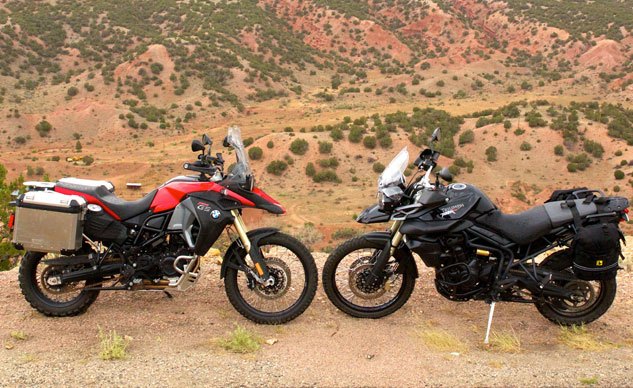
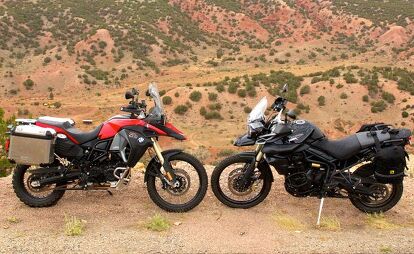





























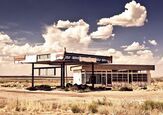
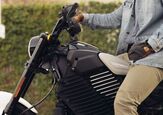
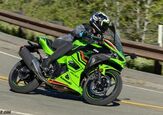
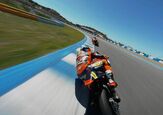
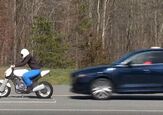

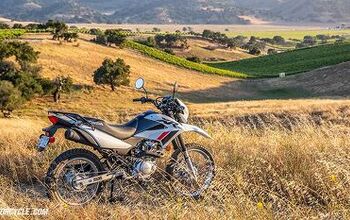
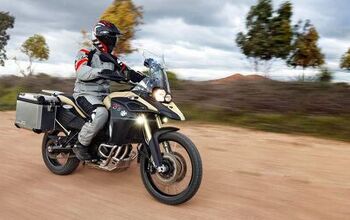
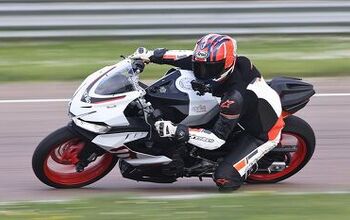
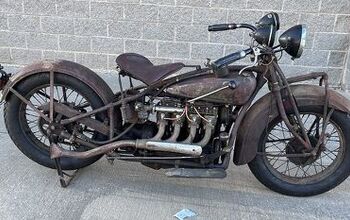
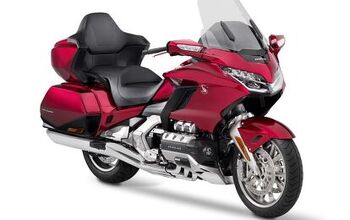
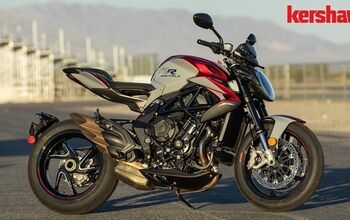

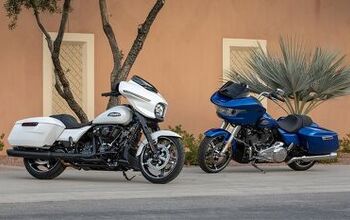
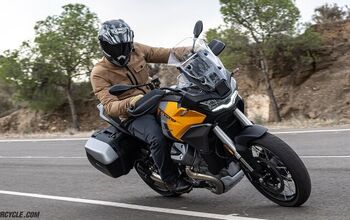
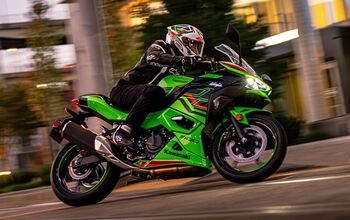
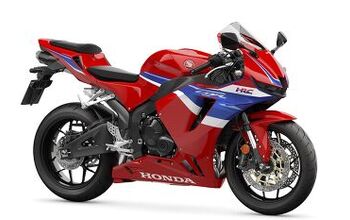
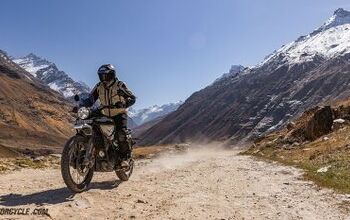
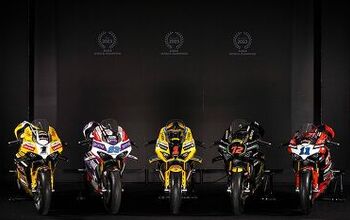
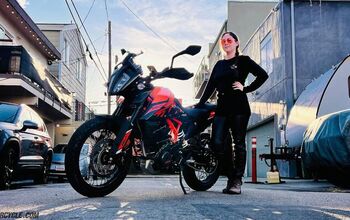
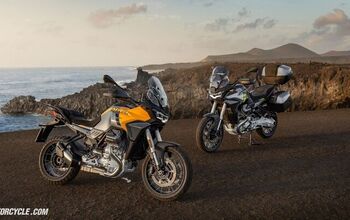

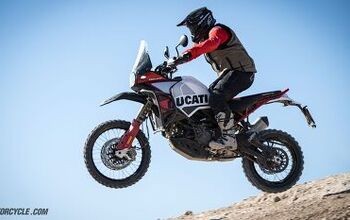
Comments
Join the conversation
I am in the Market for a new bike leaving my KLR650/2013 to go on a new Adventure 2014 BMW GS800 Adventure or the Triumph 800 Tig / I dont know what to chouse
Some videos of BMW f800gs:
https://www.youtube.com/wat...
https://www.youtube.com/wat...